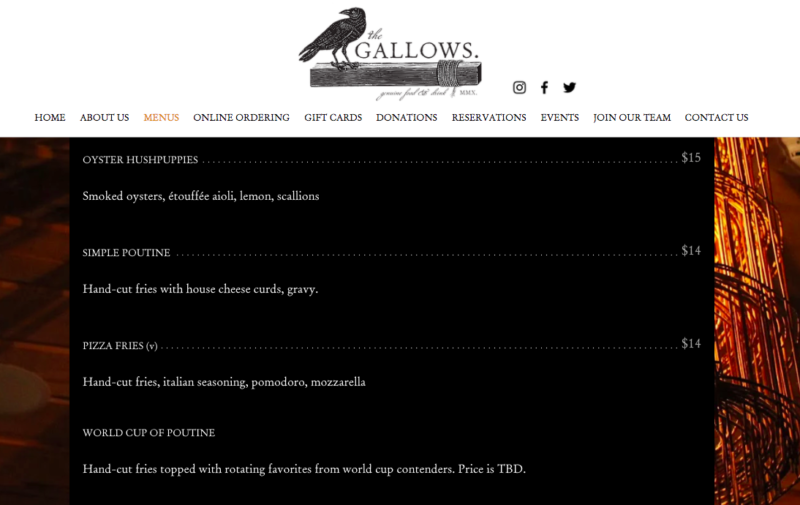

From the initial idea of a menu item to the guest’s eventual enjoyment of that meal, so much goes into building a menu and its design. When it comes to menus, bars and restaurants need to consider the profit-driving decisions around ingredients and pricing. At the same time, they can’t forget the intangible benefits that design, color scheme, and even wording can have on the brand of the business.
This is where menu engineering—the process of meticulously selecting every aspect of a menu—comes in. The term “menu engineering” is certainly broad, so in this post, we’ll give it a more concrete definition and serve up five ways to get started with menu engineering at your bar or restaurant.
Menu engineering defines the work done on all aspects of your menu—from ingredient selection, to portioning and preparation, to graphic design—in an effort to boost both sales and profit.
Menu engineering can (and does) include the following actions:
Since the average restaurant profit margin ranges between 3-5%, these efforts can easily double how much is left on your bottom line.
Let’s look at some quick ways to test out how menu engineering works for your business.

First off, if you’re brand new to restaurant menu engineering, we suggest not going off of educated guesses for these exercises. To identify profit drivers, it’s helpful to use a menu engineering worksheet to be precise about this information.
Using this sheet will help you break your food and drink items into four different categories.
Your stars are your key profit drivers, bringing in high sales at high margins. Don’t touch these menu items!
Your puzzles are items you can improve on. You could try moving these up on the menu or lowering their price to increase their popularity, thus turning them into stars.
Low-profit menu items that you keep around “just in case” can result in more damage than you realize. First off, less-popular food or drink takes up space in your back of house or on your back bar, which can cause clutter. If these items aren’t purchased frequently, they can easily lose their freshness, losing their appeal even further in your guests’ eyes.
If a drink or menu item isn’t regularly ordered, that can also force the cook to refer to a recipe card—or even worse, they could make the the order wrong. This is far from efficient.
Finally, stragglers deter guests from choosing another (potentially more profitable) item from your menu. In 2017, we saw Chili’s slash 40% of their menu, which cut wait times in half and increased guest satisfaction.
Do your restaurant or bar a favor and ditch those poor-performing menu items. It might not be an easy goodbye, but it’s a necessary one.
According to a study from Cornell, guests are willing to spend almost 10% more on more descriptive menu items. So, break out a thesaurus and get those creative juices flowing. Anything relating to meal prep or some unique adjectives can really raise your menu readers’ eyebrows.
The Gallows does a great job of this, using descriptive words like “crispy,” “soft,” “smoked,” and more. They also call out specific ingredients—it’s not just cheese, it’s fried babybel cheese, and it’s not just an aioli, it’s a sriracha-truffle aioli.

How stringent are you on portioning and ingredient use? Whoever designs your menus should make it clear exactly how much steak goes into a steak and cheese sandwich and how much Captain goes in a rum and coke.
But, don’t stop there. Do all bottles of Corona come with a lime? Does a cheeseburger platter come with a side of ketchup? These ingredients may seem incidental, and in the short term, they definitely are. In the long term, however, these additions and garnishes add up, just the way an extra half ounce of steak on every steak and cheese would add up.
Therefore, this step has two actions items:
Once you’ve identified your money-makers and revenue-drainers, gotten more accurate with portioning, and channeled your inner English major with new descriptions, make the changes to your actual menu and print them out for your guests.
If you think it’s worth it, consider consulting a professional designer or an agency to select imagery, font style, and text size that would display your brand.
When broken down into actionable steps, the vast field of menu engineering becomes much less intimidating and more like an exciting possibility. With a little grunt work on the numbers and a bit of creativity on wording and design, you can transform your bar or restaurant menu into a profit-driving, guest-delighting, and eye-catching part of your business.
Schedule 15mins to chat with a product specialist
Start a FREE Trial Today! BevSpot offers full product education and account setup for all customers! No card Information needed!
